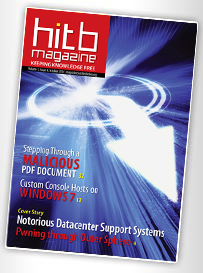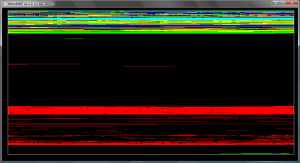 Traditionally – during the annual, last Hack in the Box 2010 conference edition held in Kuala-Lumpur, Malaysia (follow HITBSecConf @ Twitter), an IT-security related magazine is released ;) Since three issues, I have been contributing to the paper with my Windows-oriented articles. This time, I would like to present a publication called Creating custom console hosts on Windows 7, describing the potential possibilities in the area of console windows’ customization, being a consequence of a design-level modification, introduced in the latest Microsoft operating system – you’re encouraged to download, read, and criticize, as well as share ideas regarding the subject. Have fun.
Traditionally – during the annual, last Hack in the Box 2010 conference edition held in Kuala-Lumpur, Malaysia (follow HITBSecConf @ Twitter), an IT-security related magazine is released ;) Since three issues, I have been contributing to the paper with my Windows-oriented articles. This time, I would like to present a publication called Creating custom console hosts on Windows 7, describing the potential possibilities in the area of console windows’ customization, being a consequence of a design-level modification, introduced in the latest Microsoft operating system – you’re encouraged to download, read, and criticize, as well as share ideas regarding the subject. Have fun.
Additionally, the editors have also put a few, particularly interesting articles from the past HITB Magazine editions. I am very happy to announce that one of the Reader’s Choice papers is my publication – Windows Objects in Kernel Vulnerability Exploitation – originally released in HITB eZine 002. This gives us a total of two papers authored by me – if you haven’t had the chance to take a look at either of them, feel free to do so. The article (as well as all of the other ones) was given a new, brilliant graphics outfit, making the entire issue pleasant for the eye, and rich in practical knowledge ;)
